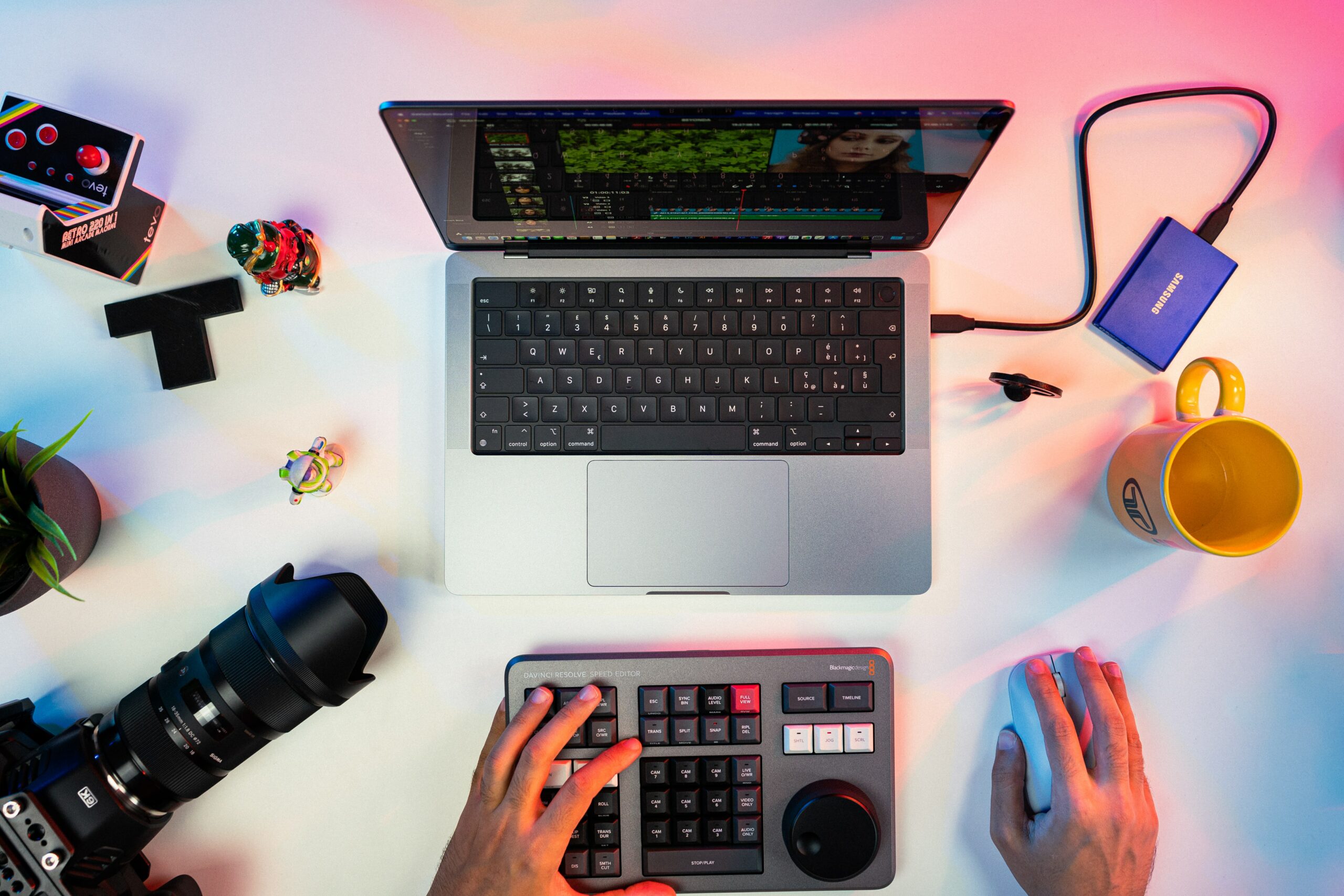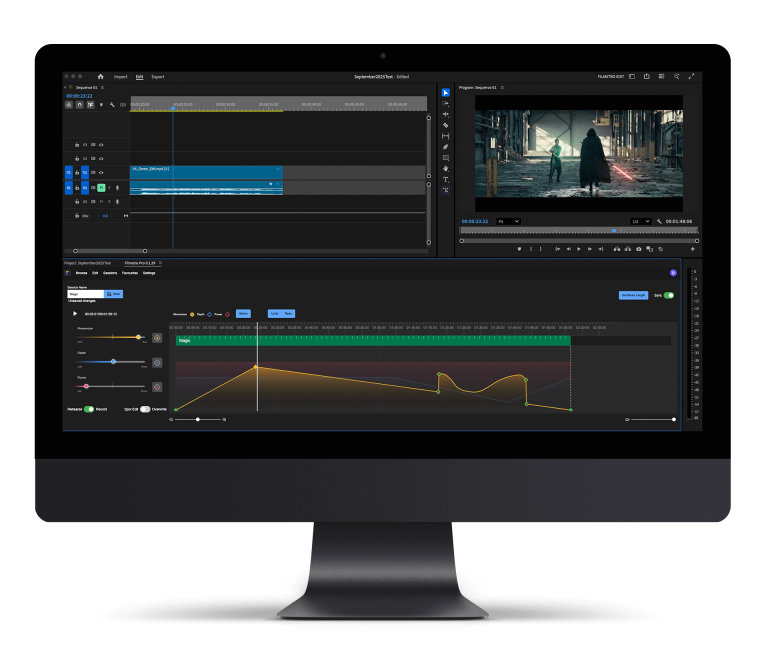Special Effects 101: Navigating the Realm of Special Effects –
If you’re in the filmmaking or video editing field, you know how important special effects are. And you probably also know how easy it is for special effects to look tacky and amateurish; the line is very thin. But special effects, when done right, are a game-changer.
Mastering the art of special effects means acquiring the ability to create new digital worlds and explore the full potential of your imagination. It’s the ability to transport the viewers to a whole new world and immerse them fully into the movie experience.
Needless to say, special effects are a treasure trove of editing potential. If you’re a video or movie editing beginner, you’re probably a little spooked at the thought of using special effects for your projects.
Before we get into the details, let’s talk about why special effects are important.
Why Special Effects Matter
Think about some amazing special effects masterpieces you may have seen growing up; the Lord of the Rings series was a hit and bagged more than a few Oscars due to the mind-blowing visual effects. And who can forget the Harry Potter movies?
Special effects are crucial not only when you’re dealing with subject matter like fantasy or fiction but also when you’re dealing with action or thriller content. Think about hits like Inception, Terminator, Gravity, or the Matrix.
Special effects not only amp up the visuals but the audio too. Audio and video special effects go hand in hand, working together to enhance the viewer’s immersive experience. Our favorite audio special effects are from the Matrix and Jurassic Park; we know there are better, more evolved examples out there by 2021, but we’ve got a soft spot for classics.
And that’s the thing, good special effects stick around in our memory for ages. No matter how old a movie is, how outdated it seems, good special effects have the ability to make it timeless. Let’s break this idea down a bit more.
Why Some Special Effects Stick Around for Ages (And why some don’t)
If you’re a 90’s kid, or just have a penchant for older movies, take a moment to think about your favorite special effects in a movie growing up. We bet you thought of that scene in Jurassic Park with the T-rex. For some of us, it was the initiation into the world of special effects and all the magic it holds. But why is it that scenes such as these stick around in our memory? And why don’t other, comparably good special fx examples stand out?
Why is that some special fx in movies stand the test of time and some simply fade in obsolescence? The truth is that there is no secret, it’s actually very simple; bad CGI.
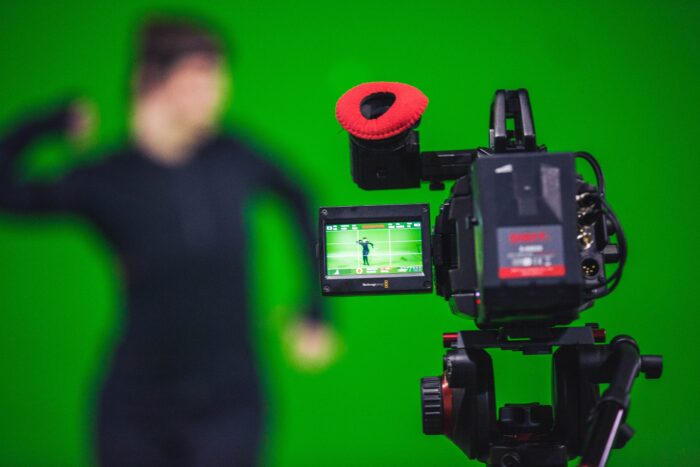
The Good and The Bad
Up until the ’90s with practical effects, the audience knew what to expect; masterful trickery using strategic camera placement and props to produce an illusion. And later, with green-screen photography, stop motion, and slit-scan photography, it continued because the audience’s expectations were set. Bad practical effects and so on are still endearing because the assumption is that the filmmakers did the best with the resources they were given.
With CGI, the audience got to see the new heights visual effects could reach, and the immense potential of digital technology. This is why bad CGI makes us cringe because we’ve also seen how good CGI can be.
It’s time for us to refresh your memories with the worst CGI disasters we’ve seen in movies, a forerunner being the Rock as the scorpion king in The Mummy Returns. Few things are comparable to the laughable horror of that sequence. But what’s so wrong about it that makes it cringeworthy, and at best, forgettable?
The answer is many things, the CGI lacks a realistic touch, the design looks flat and cartoony, to say the least. The bottom line here is, technology and access to it is not the difference between good and bad CGI. The difference is attention to detail, lighting, and composition. There’s no wand you can wave to create good special fx in movies as opposed to bad ones, technique comes from practice and experience.
5 Video Editing Tips You Need to Know
If you’re a beginner, it’s probably a good idea to master video editing before you venture into the world of special fx.
Here are the best video editing tips you can use to help you kickstart your journey.
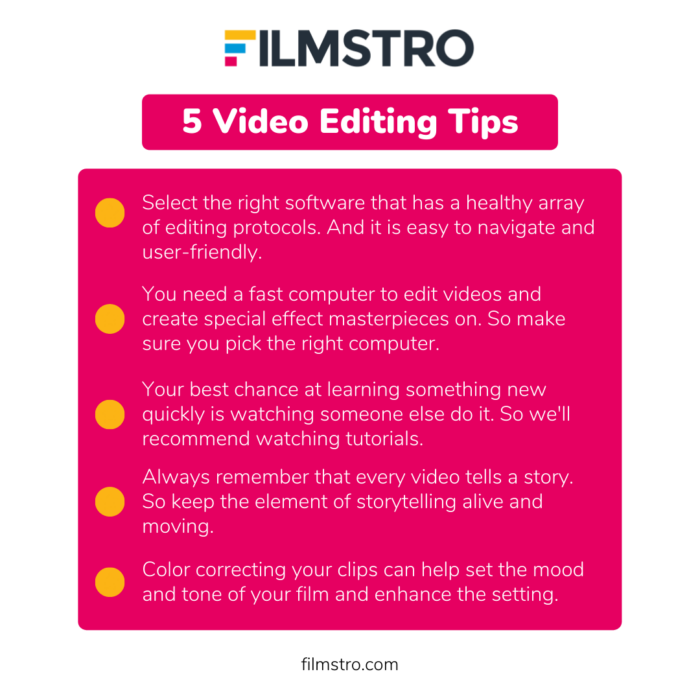
1. The Right Software
To take a video from ‘eh’ to ‘WOW’, you need the right tools. And where will you find them? In the right toolkit aka your video editing software of choice. The right video editing software can be a game changer for your end-results.
By ‘good’ we mean a software that has a healthy array of editing protocols and options so you can explore your projects to their fullest potential. If you can record the video and edit it with the same software, even better.
Plus, it’s important that your software of choice is easy to navigate and user-friendly. This will help you pick things up faster, helping you along towards mastering special effects as well.
2. The Right Computer
There’s no other way to say this, but you need a fast computer to edit videos and create special effect masterpieces on. We don’t mean you need a specific kind of computer or a supercomputer for your projects.
We simply mean you need a computer fast enough to render videos without glitches and use software that takes up more disk space. If you don’t want to switch laptops or computers, you can always invest in an SSD; a faster storage drive.
Additionally, you can up your RAM size to help video projects run smoothly without slowing down your computer.
3. Tutorials.
Your best chance at learning something new quickly is watching someone else do it. The internet is a wonderful, resourceful place, full of tutorials for everything under the sun. Whatever software or skill you choose to master, there probably is a tutorial for you out there.
Of course, you can always learn things and figure them out on your own but who needs to waste that kind of time? Instead, learn from experts and save yourself the time and effort of figuring complex protocols on softwares yourself. Trust us, video and special effects editing software are no walk in the park for beginners or even experts. You’ll need a guide to get you started at the very least.
4. You’re Telling a Story
Every video tells a story, even the ones that seem pointless are telling one. Keep in mind what your intended story is and edit with that in mind. It helps to draw a mindmap of which direction you intend to go in, what your video’s tone is, and what it hopes to achieve.
Let’s take Christopher Nolan’s masterpiece Inception for example. The topsy turvy dream sequences appeal to the audience because they complement the plotline of the movie, because they immerse the audience in the characters’ perspectives.
It’s not enough to simply add a bunch of special effects and call it a day, your special effects in film need to tell your story or at least enhance your messaging. That’s what helps make it timeless.
5. Color Correct
Speaking of telling a story through video and effects, one handy tip we personally found game-changing is color correction. Color correcting your clips can help set the mood and tone of your film and enhance the setting. It can also help invoke certain emotions. Always color correct your clips to match the tone of your project for the best results.
Even with special effects, it’s important to make sure the color correction and lighting is kept in mind. It’ll help the effects be more seamless and blend in.
Top 4 Special Effects Software for Beginners
Now that we’ve given you some handy tips to help you begin editing videos and creating special effects, let’s move on to some amazing special effects editing software out there.
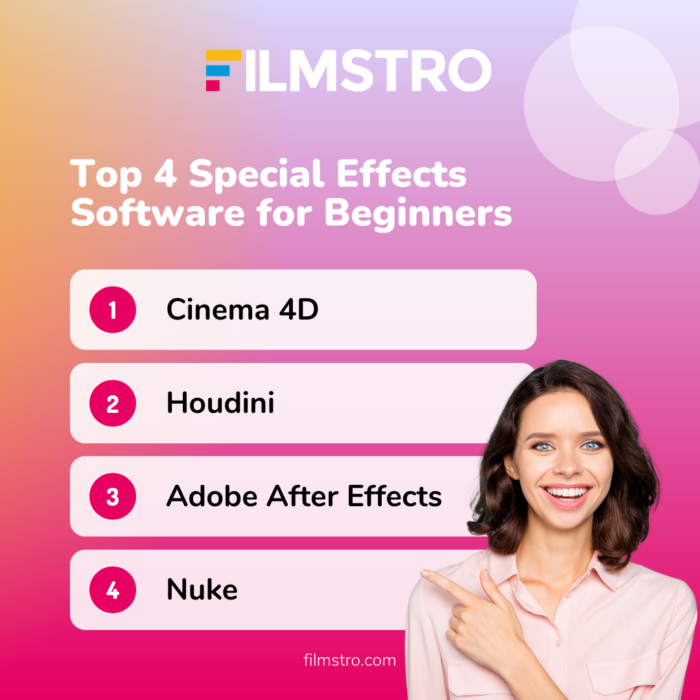
1. Cinema 4D
3D modelling is an essential part of special effects. Cinema 4D not only allows users to experiment with 3D modelling but with rendering and animations. Features like Splines and Deformers help you get creative with your 3D modelled images, enabling you to create and compress complex 3D images without compromising their geometry.
2. Houdini
Houdini is often used by giants like Sony for 3D animations and visual effects. With Houdini, you can 3D animate, render, and motion blend your 3D models to create special effects. If you’re new to the scene, these terms probably sound like gibberish to you, but trust us, it’s impressive.
3. Nuke
Nuke is used by bigwigs like Dreamworks Animation, Blizzard Entertainment and Walt Disney Animation Studios. We don’t know what more can speak for the capabilities of this visual effects software than that. Nuke gives its users node-based compositing capabilities that help simplify complex functions. For 3D modelling and editing, you can work in a 3D environment within the software to make sure you get every angle and don’t miss any detail.
4. Adobe After Effects
This software helps users apply special effects to existing footage. Adobe also has video editing software like Adobe Premier Rush so you don’t have to worry about where you’ll edit your footage either. Adobe After Effects has a wide array of options that help you create beautiful visual effects on your footage, transforming it from good to amazing.
While none of these softwares are free, we assure you that they are definitely worth the splurge for the result you’re likely to get. If you’re a beginner, we recommend getting the hang of simple video editing first and then moving onto special fx.
Final Takeaway
Special effects can make or break your project’s visual appeal, which is why you have to be careful with them. The important thing to remember is that a timeless special effects sequence does more than flash impressive visuals across the scene.
Special effects help you tell a story, and help your audience immerse themselves into it. The first step is to map out your video projects in your head and move forward with a plan, tone, setting and mood in mind. And the same goes for audio special effects. Good audio special fx complement the visual content, helping it translate better with the audience to enhance the film experience.
If you liked this article, you should also check out Things To Know About Audio Editing
We hope you enjoyed “Special Effects 101: Navigating the Realm of Special Effects” and don’t miss out on any of our other blogs. Sign up to Filmstro and follow us on Twitter, Facebook and subscribe to our Youtube channel.
You can also check out some of our amazing royalty-free music today by clicking here.



